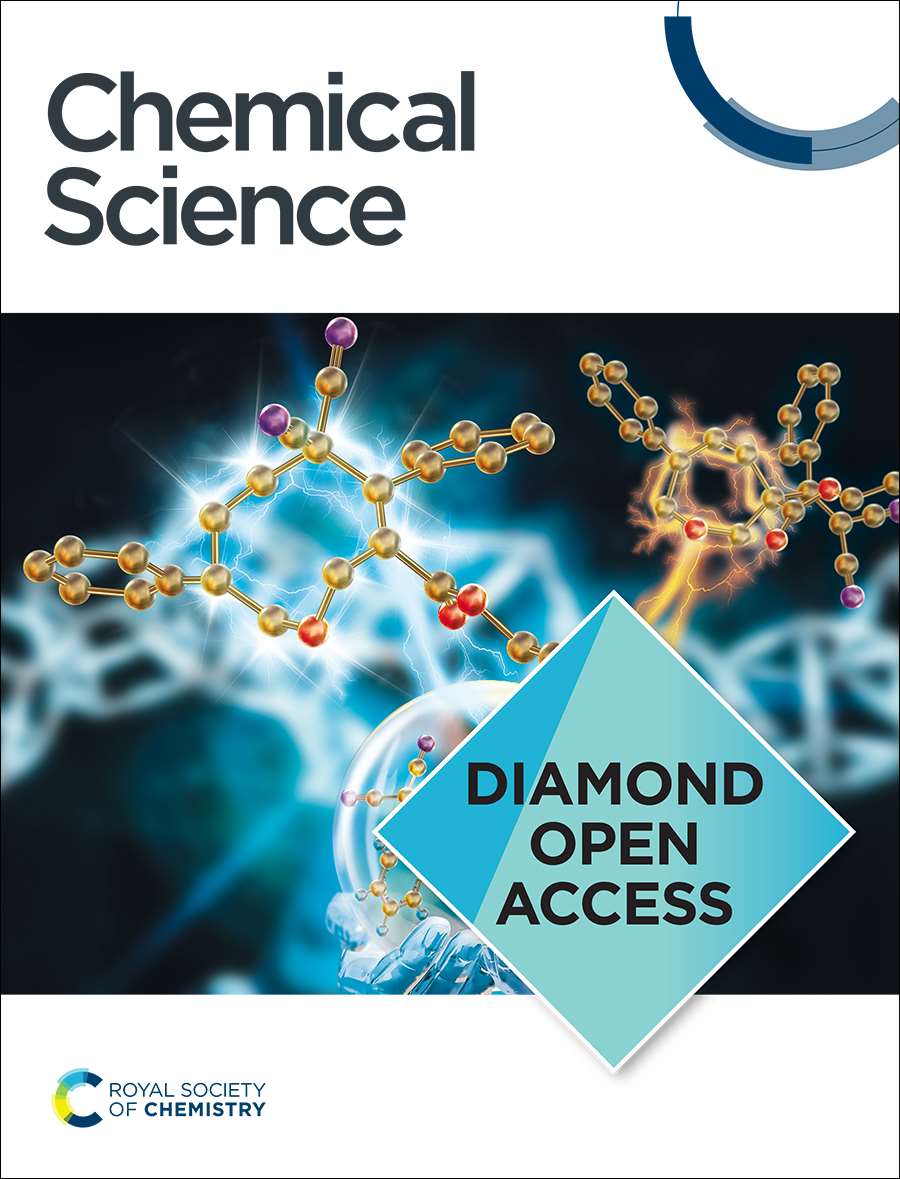Operando evidence on the chirality-enhanced oxygen evolution reaction in intrinsically chiral electrocatalysts†
IF 7.6
1区 化学
Q1 CHEMISTRY, MULTIDISCIPLINARY
引用次数: 0
Abstract
Electrolytic hydrogen is identified as a crucial component in the desired decarbonisation of the chem- ical industry, utilizing renewable energy to split water into hydrogen and oxygen. Water electrolysis still requires important scientific advances to improve its performance and lower its costs. One of the bottlenecks in this direction relates to the sluggish anodic oxygen evolution reaction (OER). Produc- ing anodes with competitive performance remains challenging due to the high energy loses and the harsh working conditions typically imposed by this complex oxidation process. Recent advancements point to spin polarization as an opportunity to enhance the kinetics of this spin-restricted reaction, yielding the paramagnetic O2 molecule. One powerful strategy deals with the generation of chiral catalytic surfaces, typically by surface functionalisation with chiral organic molecules, to promote chiral-induced spin selectivity (CISS) effect during electron transfer. However, the relationship be- tween chirality and enhanced electrocatalysis has been established only from indirect experimental evidences. In this work, we have exploited operando electrochemical and spectroscopic tools to con- firm the direct relationship between the faster OER kinetics and the optical activity of enantiopure Fe-Ni metal oxides when compared with their achiral catalysts in alkaline conditions. Our results show the participation of chiral species as reactive intermediates during the electrocatalytic reaction, supporting the appearance of a mechanistic CISS enhancement. Furthermore, these intrinsically chi- ral transition-metal oxides maintain their enhanced activity in full cell electrolyser architectures at industrially relevant current densities.求助全文
约1分钟内获得全文
求助全文
来源期刊

Chemical Science
CHEMISTRY, MULTIDISCIPLINARY-
CiteScore
14.40
自引率
4.80%
发文量
1352
审稿时长
2.1 months
期刊介绍:
Chemical Science is a journal that encompasses various disciplines within the chemical sciences. Its scope includes publishing ground-breaking research with significant implications for its respective field, as well as appealing to a wider audience in related areas. To be considered for publication, articles must showcase innovative and original advances in their field of study and be presented in a manner that is understandable to scientists from diverse backgrounds. However, the journal generally does not publish highly specialized research.
 求助内容:
求助内容: 应助结果提醒方式:
应助结果提醒方式:


